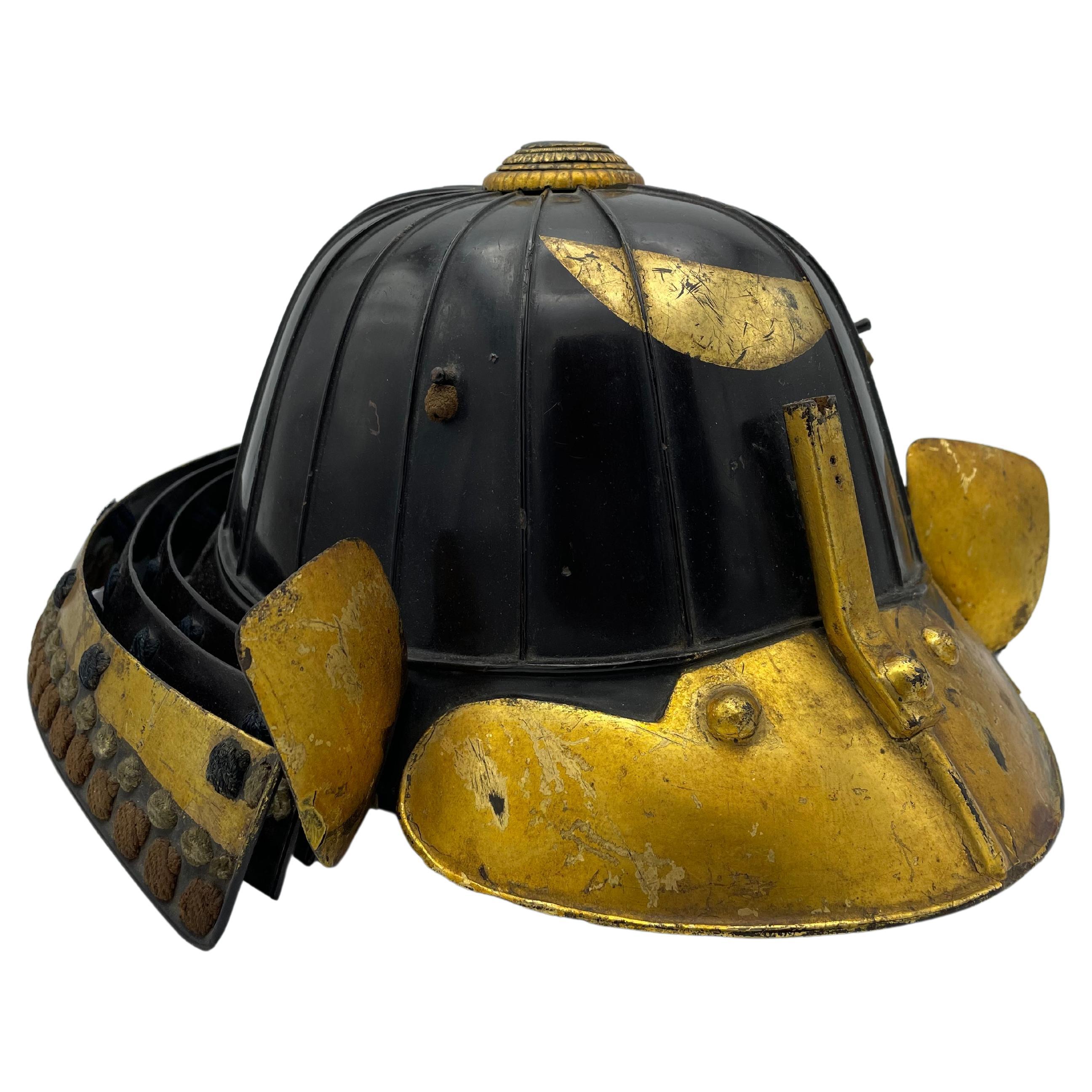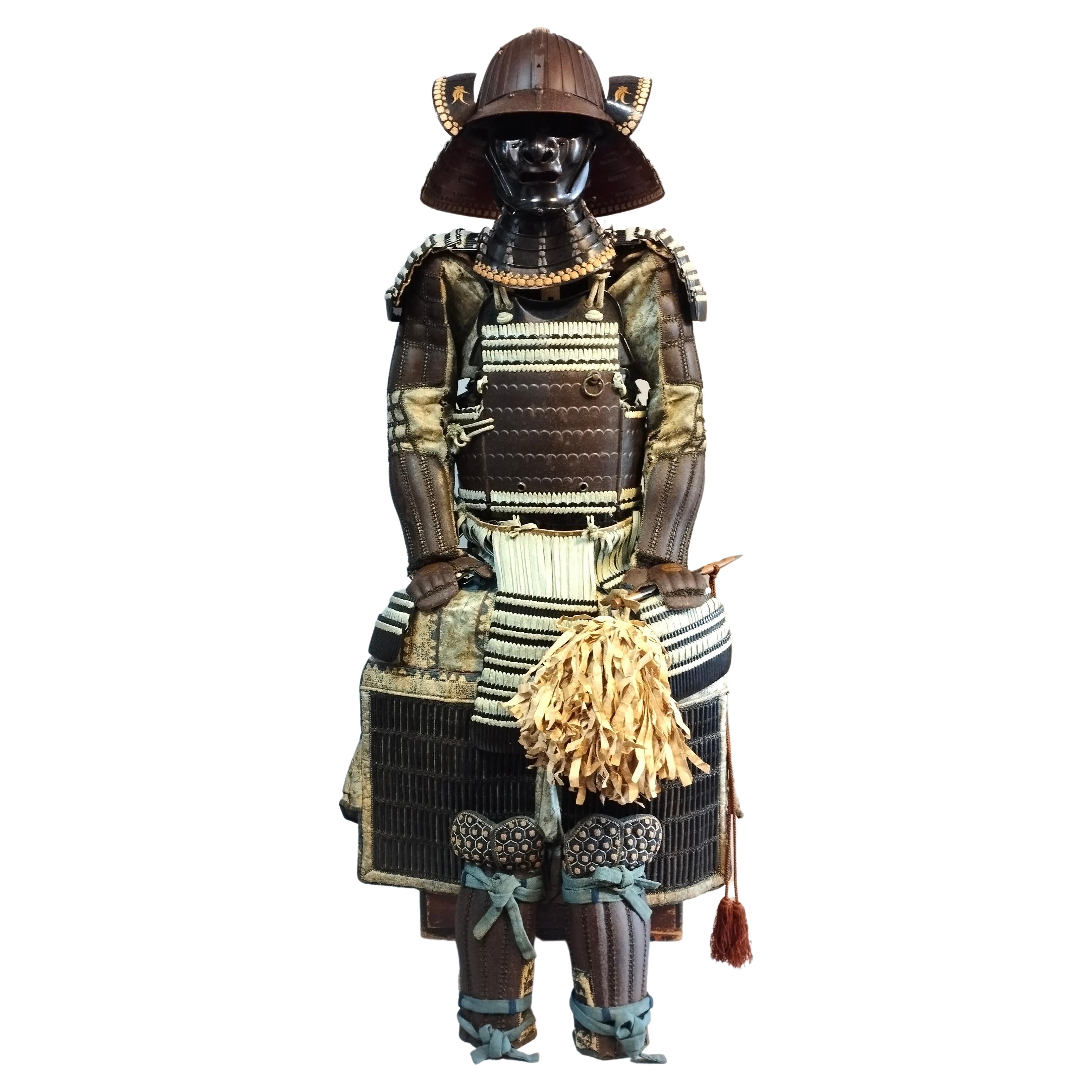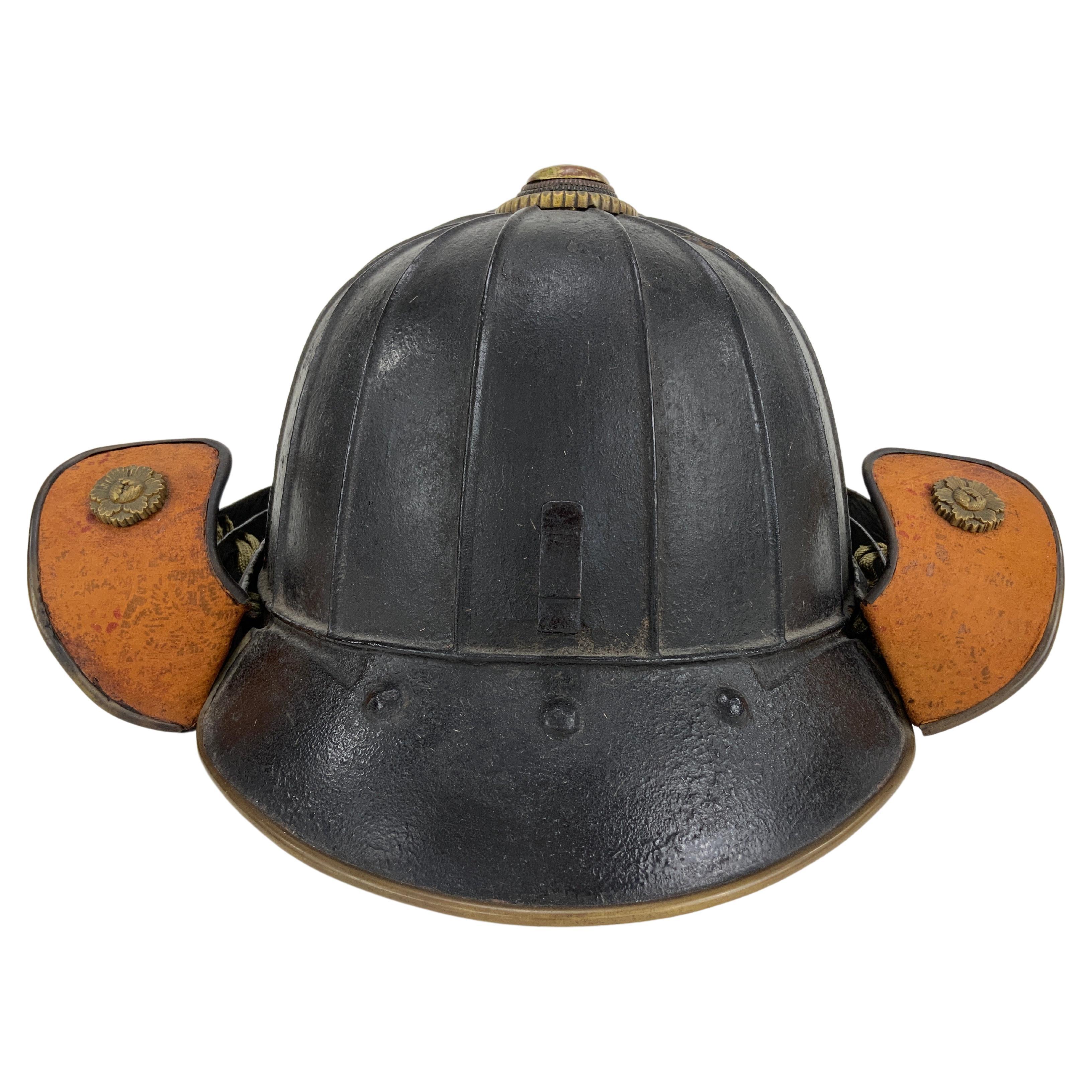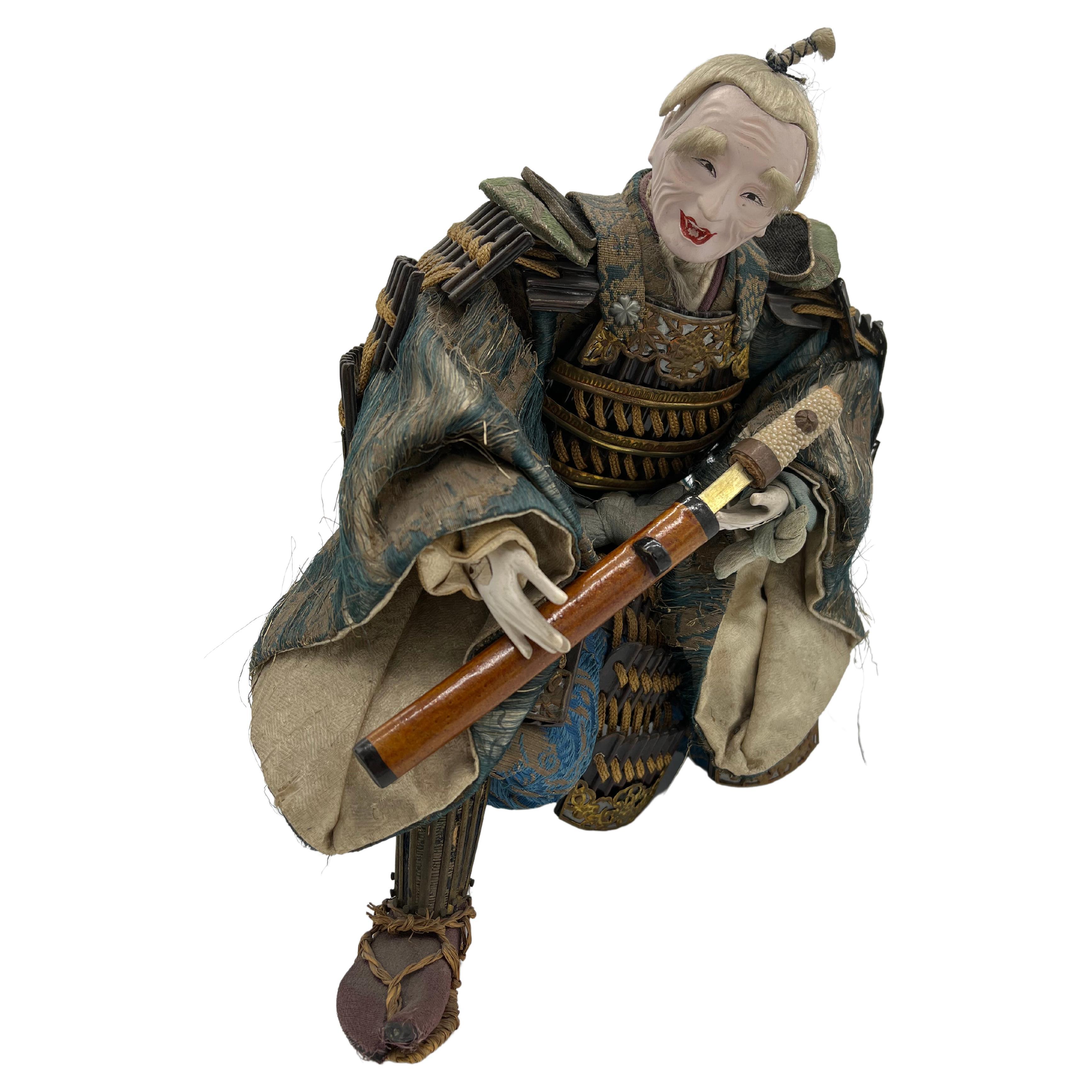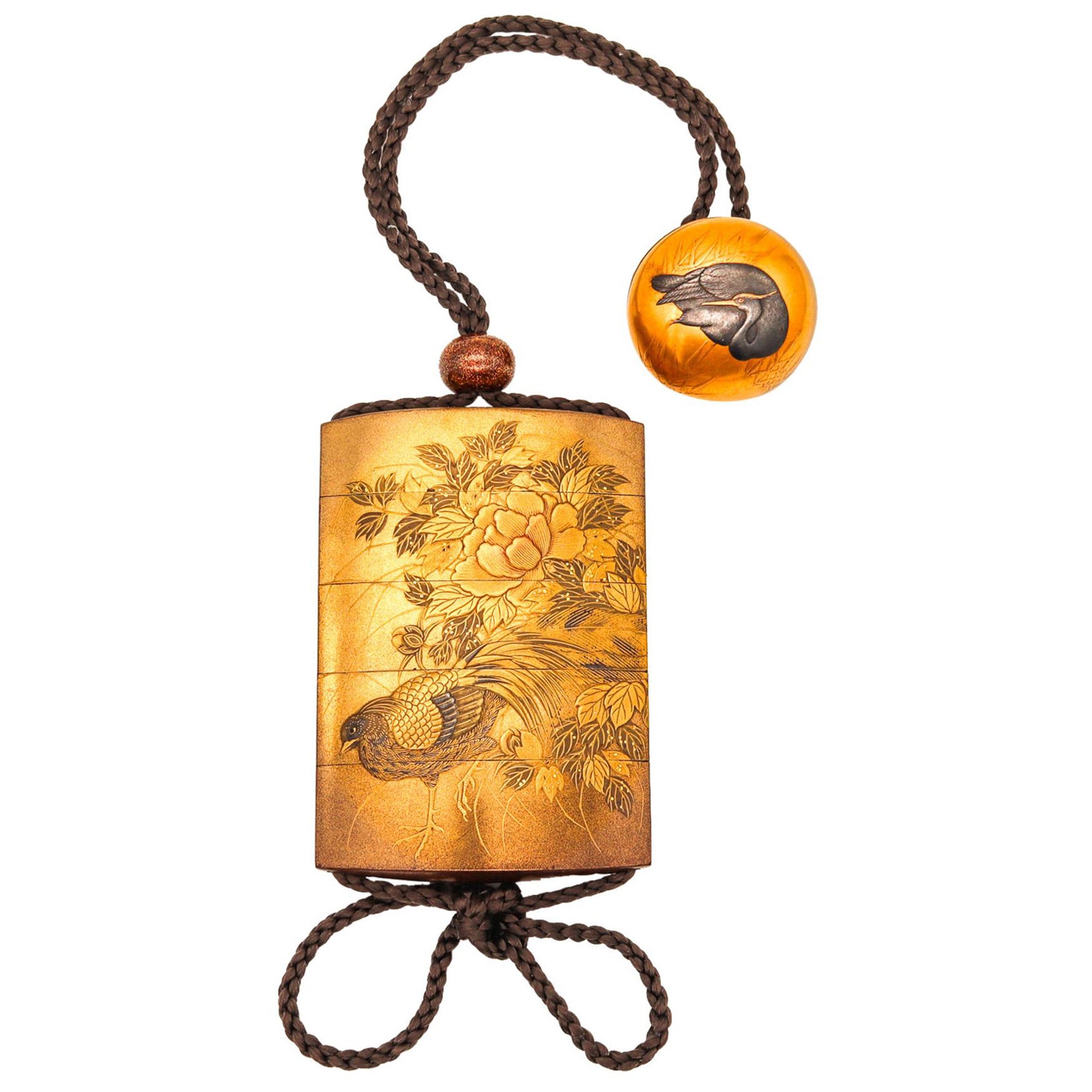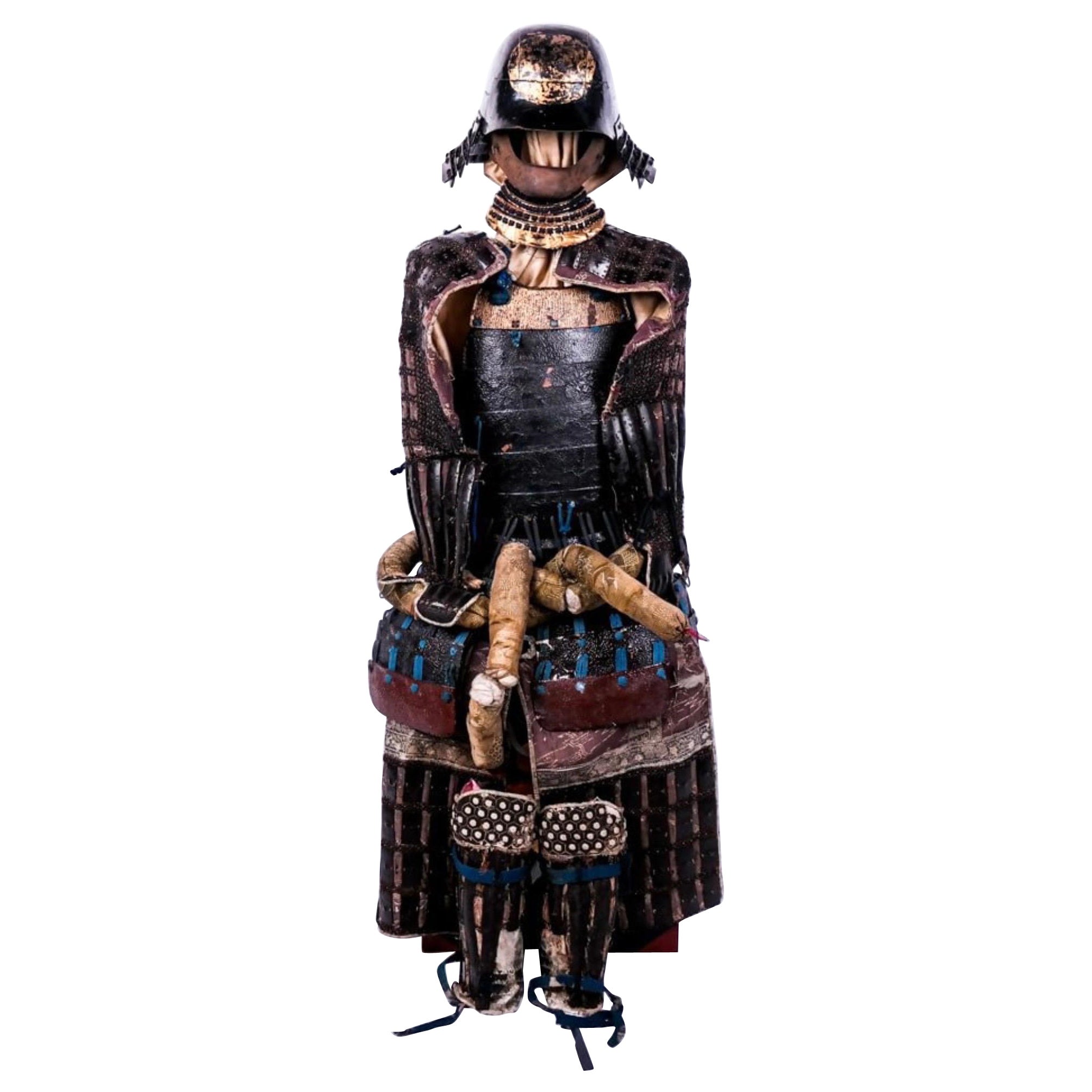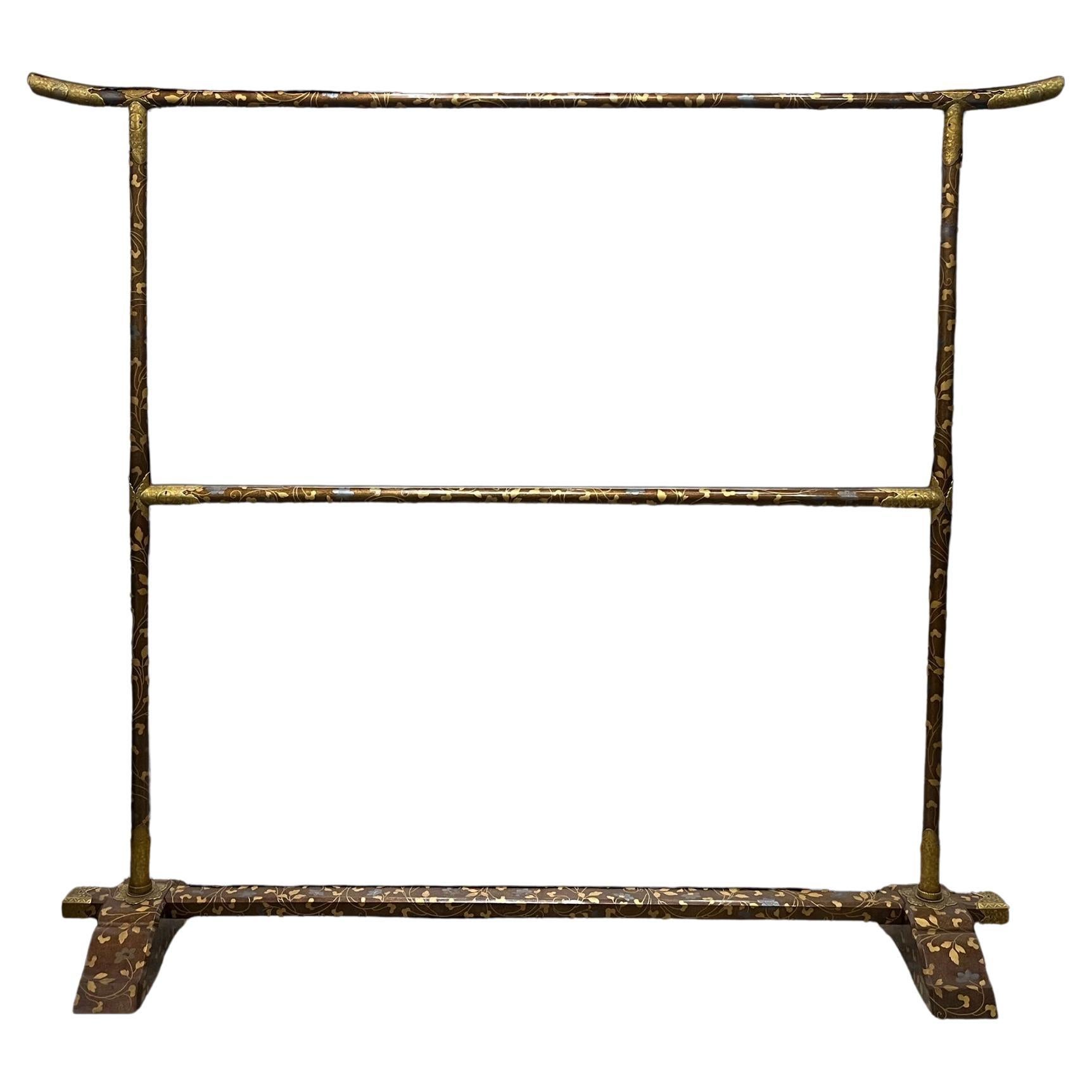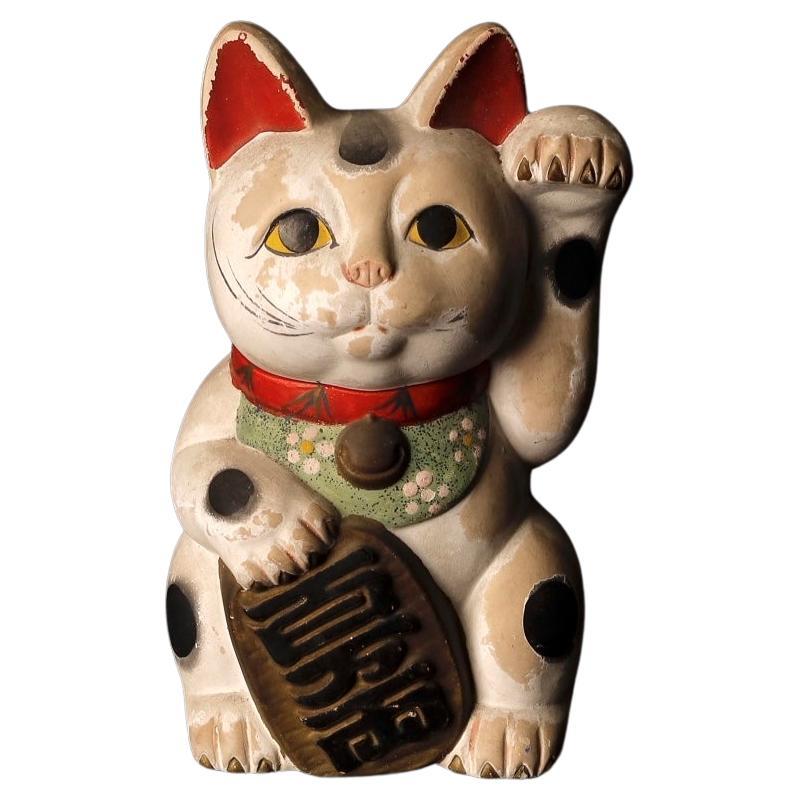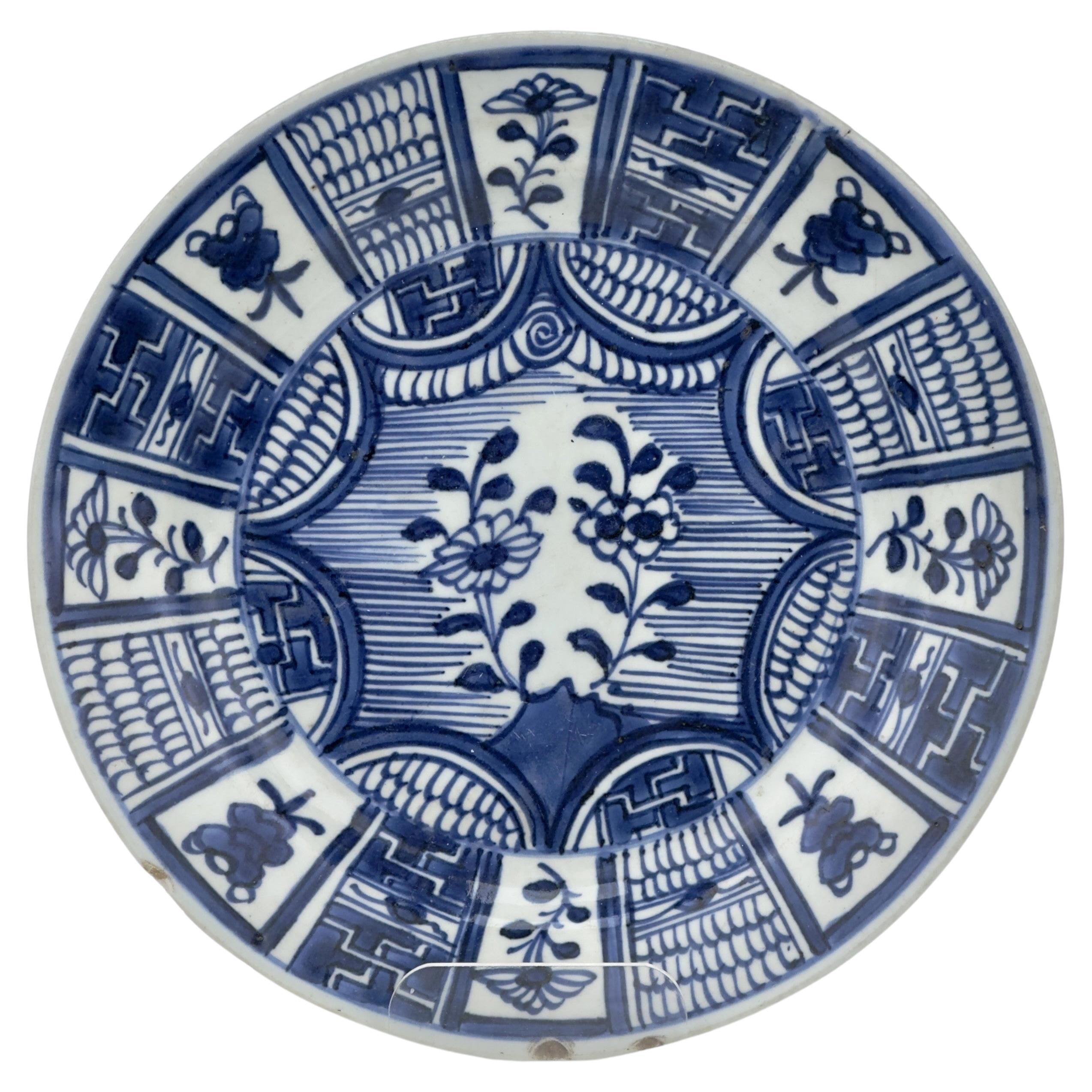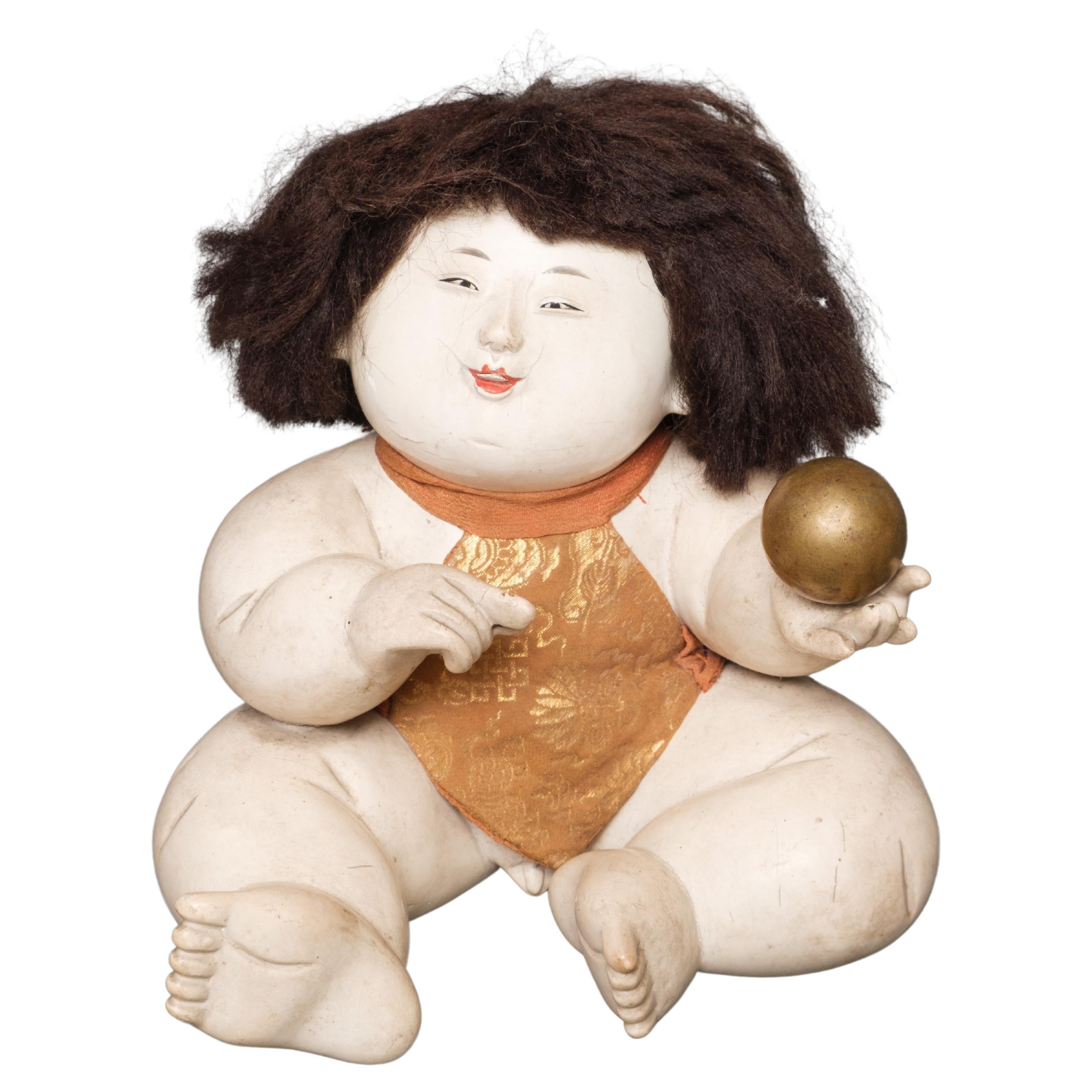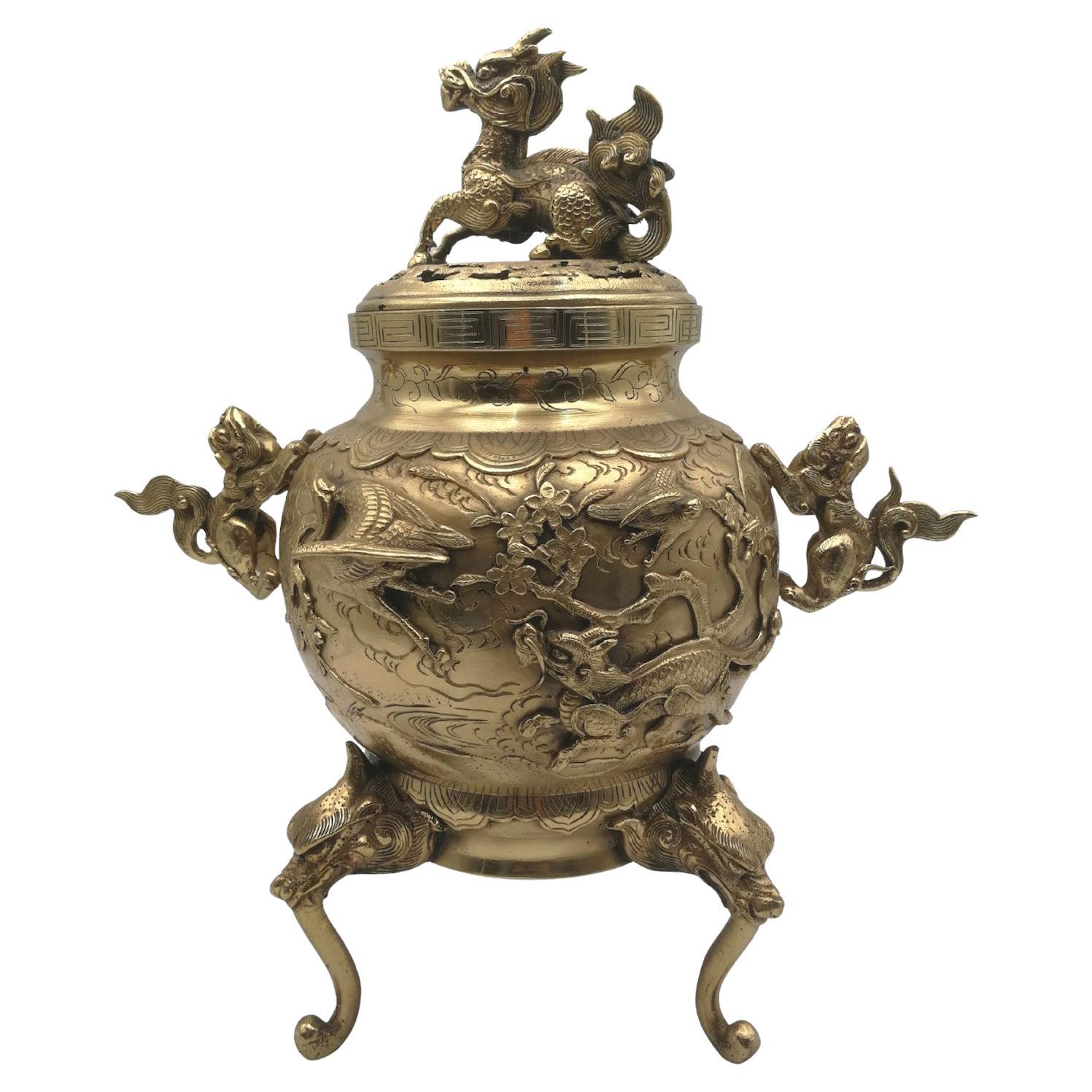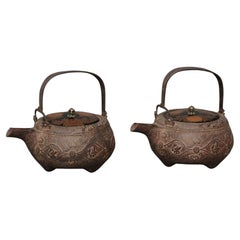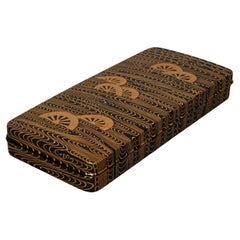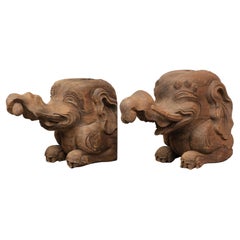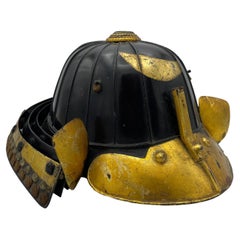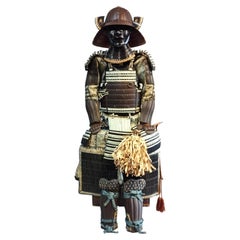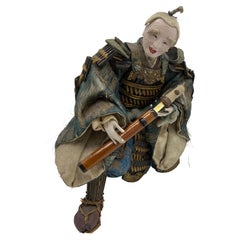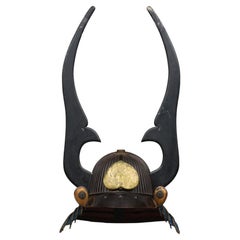
Japanese Edo-Period 62-Plate Kabuto 兜 'Helmet' with Long Lacquer Wakidate
View Similar Items
Want more images or videos?
Request additional images or videos from the seller
1 of 18
Japanese Edo-Period 62-Plate Kabuto 兜 'Helmet' with Long Lacquer Wakidate
About the Item
- Dimensions:Height: 27.96 in (71 cm)Width: 14.18 in (36 cm)Depth: 12.6 in (32 cm)
- Materials and Techniques:
- Place of Origin:
- Period:
- Date of Manufacture:Edo Period 1600-1868
- Condition:Wear consistent with age and use. Seen its age it is in a very good condition with traces of wear consistent with age, like lacquer loss along the edges. The maedate with some minor oxidation. Please look at the photos for a condition reference.
- Seller Location:Amsterdam, NL
- Reference Number:Seller: B43981stDibs: LU7165232687112
About the Seller
4.8
Vetted Professional Seller
Every seller passes strict standards for authenticity and reliability
Established in 1996
1stDibs seller since 2022
22 sales on 1stDibs
Typical response time: 9 hours
Authenticity Guarantee
In the unlikely event there’s an issue with an item’s authenticity, contact us within 1 year for a full refund. DetailsMoney-Back Guarantee
If your item is not as described, is damaged in transit, or does not arrive, contact us within 7 days for a full refund. Details24-Hour Cancellation
You have a 24-hour grace period in which to reconsider your purchase, with no questions asked.Vetted Professional Sellers
Our world-class sellers must adhere to strict standards for service and quality, maintaining the integrity of our listings.Price-Match Guarantee
If you find that a seller listed the same item for a lower price elsewhere, we’ll match it.Trusted Global Delivery
Our best-in-class carrier network provides specialized shipping options worldwide, including custom delivery.More From This Seller
View AllJapanese Edo-period gosho’ningyô 御所人形 (palace doll) of plump, seated child
Located in Amsterdam, NL
A charming gosho’ningyô (palace doll) of plump, seated child with a brilliant white skin and a small delicately elegant face, reminiscent of a young noble. The doll is playfully rais...
Category
Antique Early 19th Century Japanese Antiquities
Materials
Paste, Silk, Paint
Pair of Japanese cast iron chôshi 銚子 (sake kettles) with lacquered lids
Located in Amsterdam, NL
Pair of enticing cast iron chôshi (sake kettles) with a detailed lacquered lid, raised by three low feet. Its rotund body with a subtle embossed design of stylized symbols, like myth...
Category
Antique Early 19th Century Japanese Antiquities
Materials
Silver, Iron
Japanese Lacquer Suzuribako 硯箱 'Writing Box' by Hattori Toshio 服部俊夫 '1943'
By Hattori Toshio (Shunsho)
Located in Amsterdam, NL
A small Japanese black and gold lacquer suzuribako (writing box) with cartwheels in water, by the artist Hattori Toshio (1943).
Of rectangular form with rounded corners, bearing a lustrous rôiro ground throughout, the exterior sides of the box and exterior of the cover finely decorated in gold and little silver takamaki-e with cartwheels flowing in a dynamically executed body of water with many swirls
and gushes as well as scattered dew drops, the interior tray fitted with a rectangular ink stone and silver suiteki (waterdropper).
The underside signed ‘Toshi’.
With the original wooden tomobako with hakogaki reading Namikuruma makie suzuribako (The
writing box set, with a design of wheels in water), as well as a leaflet written in Japanese with the artist’s biography up to 1987.
Hattori Toshio (b. 1943), art name Hattori Shunsho, was first selected for the Nitten exhibition in Showa 38 (1963). Since then, he has exhibited more than twenty times at the Nitten and other exhibitions, winning numerous prestigious awards. In 1995,
he had an audience with Pope John Paul II and presented the Pope with a lacquer reading table. In 2004, he created the shelves for the guest room of the Kyoto State Guest House of the Government of Japan. He is a member of the Kyoto Crafts Artists Association, the Kyoto Lacquer...
Category
Late 20th Century Japanese Lacquer
Materials
Wood, Giltwood, Lacquer
Pair of Japanese Carved Wooden Temple Ornaments 木鼻 'Kibana' Shaped like Baku 獏
Located in Amsterdam, NL
A lovely pair of very detailed carved wooden temple ornaments (kibana) in the shape of elephant-like mythical creatures known as ‘Baku’.
Baku are Japan...
Category
Antique Early 19th Century Japanese Sculptures and Carvings
Materials
Wood
$3,726 / set
Free Shipping
Tall Japanese Woven Bamboo Ikebana Basket by Kosuge Kôgetsu 小菅吼月 (1932-2017)
By Kosuge Kogetsu
Located in Amsterdam, NL
Tall woven bamboo and rattan baluster-shaped ikebana flower basket (hanakago) with a loop handle by Kosuge Kôgetsu (1932-2017).
The basket is loosely plaited with bamboo strips in m...
Category
Early 20th Century Japanese Antiquities
Materials
Bamboo
Large Japanese 6-panel byôbu 屏風 (folding screen) with Edo genre painting
Located in Amsterdam, NL
An elaborate, large six-panel byôbu (folding screen) featuring a detailed genre painting on gold leaf, capturing the vibrancy of festive scenes from the Edo period.
Central to the p...
Category
Antique Early 19th Century Japanese Paintings and Screens
Materials
Metal, Gold Leaf
You May Also Like
Japanese Antique Combat Helmet 'Kabuto' 1800s Edo Era
Located in Paris, FR
This is an antique combat helmet made around 1800s in Edo era in Japan.
Kabuto is a type of helmet first used by ancient Japanese warriors which, in later periods, became an important part of the traditional Japanese armour...
Category
Antique Early 19th Century Japanese Antiquities
Materials
Iron
18th Century Hirate Clan Samurai Armor with Signed Kabuto Helmet
Located in Fukuoka, JP
This is a truly exceptional set of 18th century Samurai armor that is sure to impress any collector or enthusiast. The patinated iron used in its construction has aged beautifully, giving the armor a truly unique appearance that is sure to catch the eye. The brocade silk and cotton padding used to line the armor not only provide a comfortable fit for the wearer, but also add an extra layer of decorative flair.
One of the most striking features of this armor is the crests of the Hirate samurai clan that adorn it. These crests are a symbol of the clan's identity and heritage, and their presence on the armor speaks to the deep connection between samurai warriors and the clans they belonged to.
The Kabuto...
Category
Antique 18th Century Japanese Antiquities
Materials
Iron
Japanese Samurai Helmet Kabuto Edo Period (1603-1867)
Located in Hampstead, QC
A Japanese Samurai black-lacquered helmet (kabuto) in suji bachi style and of a goshozan shape consisting of the:
- main dome (hachi) made from 16 plates in natural iron riveted to...
Category
Antique Early 19th Century Japanese Edo Metalwork
Materials
Iron
Japanese Samurai Figure Hinaningyo, Edo Period
Located in Munich, Bavaria
Antique samurai doll called Hinaningyo; Japan, late EDO period
Praised at the Tang-no-sekku boys' festival on May 5th as a sign of bravery, embodying the...
Category
Antique Mid-18th Century Japanese Antiquities
Materials
Textile, Wood
$2,633 Sale Price
20% Off
Japan 18th Century Edo Period Five Drawer Inro Lacquered Gilt Wood With Rooster
Located in Miami, FL
Japanese Inro from the Edo period (1615-1868)
Beautiful Inro, created in Japan during the Edo (1615-1868) Shogunate period circa Late 18th century. It was carefully crafted in carve...
Category
Antique 18th Century Japanese Edo Antiquities
Materials
Silver
$3,496 Sale Price
30% Off
18th Century, Japanese Edo Period Lacquer & Chain Mail Suit of Samurai Armor
Located in Atlanta, GA
Japanese, Edo Period (1603-1868), likely late 18th century.
Step into the rich tapestry of Japanese history with this exquisite 18th-century Edo Period Lacquer & Chain Mail Suit of Armor, a masterpiece that seamlessly blends martial craftsmanship with artistic elegance. Crafted during a period of unparalleled cultural refinement, this armor is a testament to the meticulous skill and dedication of Japanese artisans.
The Gosuko armor, at the heart of this ensemble, embodies the traditional armor design of the Edo Period. Each meticulously lacquered plate, carefully adorned with ornate motifs, reflects not only the functional sophistication required for battle but also the aesthetic sensibilities intrinsic to Japanese art. The incorporation of chain mail adds a layer of flexibility and mobility, harmonizing the demands of protection with the fluidity required in combat.
A crowning glory to this armor is the Kabuto Helmet, an iconic symbol of samurai identity and resilience. Its design not only provides formidable protection but also serves as a canvas for artistic expression. The helmet's form, combined with lacquer embellishments and a crest, creates a striking visual statement, a representation of the wearer's identity and lineage.
To complete the ensemble, the armor comes with a brocade fabric, adding a touch of regality to this already magnificent piece. The interplay of textures and colors in the brocade further elevates the visual impact, turning the act of donning this armor into a ceremonial experience.
For the discerning collector, this piece is presented in a lacquer armor box, meticulously crafted to safeguard and showcase the historical significance of the armor. The accompanying wood armor display stand serves as a stage, allowing this masterpiece to command attention in any setting, whether it be a private collection, museum exhibit, or a distinguished living space.
Owning this 18th-century Japanese Edo Period Lacquer...
Category
Antique 18th Century Japanese Japonisme Antiquities
Materials
Iron, Gold Leaf
$10,000 Sale Price
20% Off
Recently Viewed
View AllMore Ways To Browse
Japanese Spinning Wheel
Khmer Elephant
Tigers Eye Snuff Bottle
Yak Horn
Bronze Bracelet Cambodia
Chinese Dragon Lantern Stand
Ichimatsu Ningyo Doll
Kimekomi Dolls
Luristan Bronze
Luristan Dagger
Midori Matsumoto
Monkey Gong
Pegu Bronze
Ruo Shen
Wheat Thrasher
11th Century Vishnu Stone Statue
Antique Cast Iron Hibachi
Dinosaur Statue
